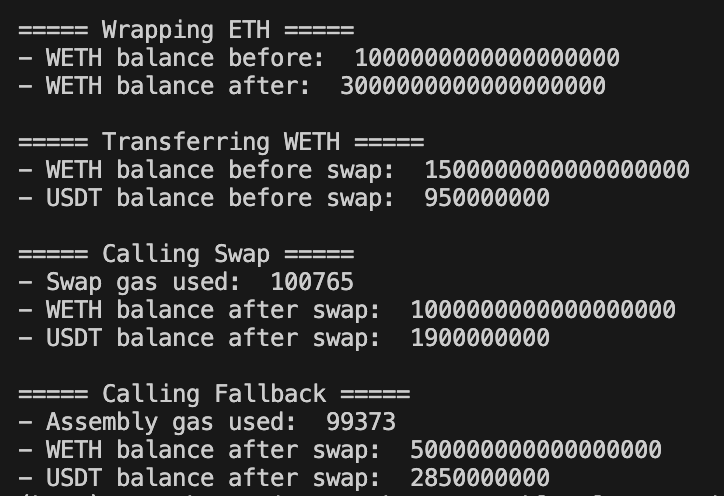文章目录
在Rust编程语言中,模式匹配是一种非常强大的功能,它允许开发者以灵活和表达性强的方式处理值。这是通过使用match语句和模式来实现的,它类似于其他语言中的switch语句,但提供了更多的灵活性和安全性。
基础用法
在Rust中match语句允许你将一个值与一系列模式进行比较,并根据匹配到的模式执行相应的代码块。
Rust的模式匹配支持多种不同的模式类型,包括:
1.字面值: 匹配具体的数值或者布尔值等。
2.绑定: 通过模式将值绑定到变量。
3.元组和结构体: 可以对元组或结构体的具体结构进行模式匹配。
4.枚举: 匹配枚举的不同变体。
5.引用: 匹配引用,包括通过解引用进行匹配。
6.范围: 匹配一个范围内的值,例如 1…=5 表示从 1 到 5 的所有值。
匹配各种类型
Rust中match语法的调用模版如下:
rust">//语法结构
match target {模式1 => 表达式1,模式2 => {语句1;语句2;表达式2},_ => 表达式3
}
匹配字面值
rust">//匹配字面值
let x = 3;
match x {1 => println!("one"),2 => println!("two"),3 => println!("three"),//_用与匹配其它的参数 类似于C++的default _ => println!("anything"),
}
匹配枚举值
rust">//匹配枚举类型
enum Direction {East,West,North,South,
}fn main() {let dire = Direction::South;match dire {Direction::East => println!("East"),//匹配North 或 South Direction::North | Direction::South => {println!("South or North");},//匹配剩余的其它类型 //除了_通配符,用一个变量来承载其他情况也是可以的//other => println!("other direction: {:?}", other),_ => println!("West"),//_ =>() 空操作};
}
匹配结构体
rust">struct Point {x: i32,y: i32,
}let point = Point { x: 0, y: 7 };match point {Point { x, y: 0 } => println!("On the x axis at {}", x),Point { x: 0, y } => println!("On the y axis at {}", y),Point { x, y } => println!("On neither axis: ({}, {})", x, y),
}
匹配嵌套的结构体和枚举
rust">enum Color {Rgb(i32, i32, i32),Hsv(i32, i32, i32),
}
enum Message {Quit,Move { x: i32, y: i32 },Write(String),ChangeColor(Color),
}fn main() {let msg = Message::ChangeColor(Color::Hsv(0, 160, 255));match msg {Message::ChangeColor(Color::Rgb(r, g, b)) => {}Message::ChangeColor(Color::Hsv(h, s, v)) => {}_ => ()}
}
模式匹配赋值
match本身也是一个表达式,除了可以用来处理业务逻辑之外还可以用来赋值。
rust">enum IpAddr {Ipv4,Ipv6
}
fn main() {let ip1 = IpAddr::Ipv6;//模式匹配的结果赋值给ip_strlet ip_str = match ip1 {IpAddr::Ipv4 => "127.0.0.1",_ => "::1",};println!("{}", ip_str);
}
提取绑定值
在模式匹配的时候提取枚举中的绑定值。
rust">//提取枚举值中绑定的数据
enum Message {Quit,Move { x: i32, y: i32 },Write(String),ChangeColor(i32, i32, i32),
}fn main() {let msg = Message::ChangeColor(0, 160, 255);match msg {Message::Quit => {}Message::Move { x, y } => {}Message::Write(text) => println!("Text message: {}", text),Message::ChangeColor(r, g, b) => {}}
}
解构Option
rust">enum Option<T> {None,Some(T),
}
fn plus_one(x: Option<i32>) -> Option<i32> {match x {None => None,Some(i) => Some(i + 1),}
}
let five = Some(5);
let six = plus_one(five);
let none = plus_one(None);
高级用法
添加匹配守卫
match语句的模式可以包含守卫(guard),增加则外的条件判断,用于在模式匹配后进一步确定是否执行对应的代码块。
rust">let num = Some(4);
match num {//Some(x) 且x<5执行该语句 x<5就是匹配守卫 进行额外的条件判断 Some(x) if x < 5 => println!("less than five"),Some(x) => println!("greater than or equal to five"),None => (),
}
范围匹配
不用一个一个写对应的匹配值,直接匹配一定范围内的值。通过序列 …= 匹配值的范围
rust">//匹配1--5
let x = 5;
match x {1..=5 => println!("one through five"),_ => println!("something else"),
}//匹配a--j k--z
let x = 'c';
match x {'a'..='j' => println!("early ASCII letter"),'k'..='z' => println!("late ASCII letter"),_ => println!("something else"),
}
切片模式
Rust的模式匹配还可以应用于数组和切片,这使得处理数据序列时更加灵活
rust">let arr = [1, 2, 3];
match arr {//匹配以1开头的数组 [1, _, _] => println!("Starts with one"),//匹配以2为中间值的数组 [_, 2, _] => println!("Contains two in the middle"),//匹配以3结尾的数组 [_, _, 3] => println!("Ends with three"),//匹配其它值 _ => println!("Does not match any pattern"),
}
变量绑定
Rust的模式匹配还支持使用@进行绑定,这允许在进行模式匹配的同时,将匹配的值绑定到变量上.
rust">//当你既想要限定分支范围,又想要使用分支的变量时,就可以用 @ 来绑定到一个新的变量上
enum Message {Hello { id: i32 },
}
let msg = Message::Hello { id: 5 };
match msg {Message::Hello { id: id_variable @ 3..=7 } => {println!("Found an id in range: {}", id_variable)},Message::Hello { id: 10..=12 } => {println!("Found an id in another range")},Message::Hello { id } => {println!("Found some other id: {}", id)},
}
使用…进行模糊匹配
rust">//用 .. 忽略剩余值
struct Point {x: i32,y: i32,z: i32,
}
let origin = Point { x: 0, y: 0, z: 0 };
match origin {//不关心后续的值 只匹配第一个值Point { x, .. } => println!("x is {}", x),
}
使用_进行值忽略
rust">//使用_忽略整个值 忽略第一个参数 只使用第二个参数
fn foo(_: i32, y: i32) {println!("This code only uses the y parameter: {}", y);
}
fn main() {foo(3, 4);
}//使用嵌套的_忽略部分值
let mut setting_value = Some(5);
let new_setting_value = Some(10);match (setting_value, new_setting_value) {//忽略绑定值 不进行操作 (Some(_), Some(_)) => {println!("Can't overwrite an existing customized value");}_ => {setting_value = new_setting_value;}
}//忽略特定位置的值,只操作未被忽略的值
let numbers = (2, 4, 8, 16, 32);
match numbers {(first, _, third, _, fifth) => {println!("Some numbers: {}, {}, {}", first, third, fifth)},
}//使用下划线开头表示未使用的变量
//只使用_和使用以下划线开头的名称有些微妙的不同: 比如_x仍会将值绑定到变量,而_则完全不会绑定。
fn main() {let _x = 5;let y = 10;
}
固定某个字段的匹配
rust">//固定某个字段的匹配模式
fn main() {let p = Point { x: 0, y: 7 };match p {//y=0 的匹配 Point { x, y: 0 } => println!("On the x axis at {}", x),//x=0 的匹配 Point { x: 0, y } => println!("On the y axis at {}", y),Point { x, y } => println!("On neither axis: ({}, {})", x, y),}
}
多分支匹配
增加了逻辑或操作,一个语句里面匹配多个条件
rust">//多分支匹配
let x = 1;
match x {1 | 2 => println!("one or two"),3 => println!("three"),_ => println!("anything"),
}
其它匹配方式
if let匹配方式
当你只要匹配一个条件,且忽略其他条件时就用if let ,否则都用match
rust">let v = Some(3u8);
match v {Some(3) => println!("three"),_ => (),
}
//等价于
if let Some(3) = v {println!("three");
}
使用matches!宏进行匹配
rust">enum MyEnum {Foo,Bar
}
fn main() {let v = vec![MyEnum::Foo,MyEnum::Bar,MyEnum::Foo];//过滤Foo v.iter().filter(|x| matches!(x, MyEnum::Foo));//其它匹配方式let foo = 'f';assert!(matches!(foo, 'A'..='Z' | 'a'..='z'));let bar = Some(4);assert!(matches!(bar, Some(x) if x > 2));
}






